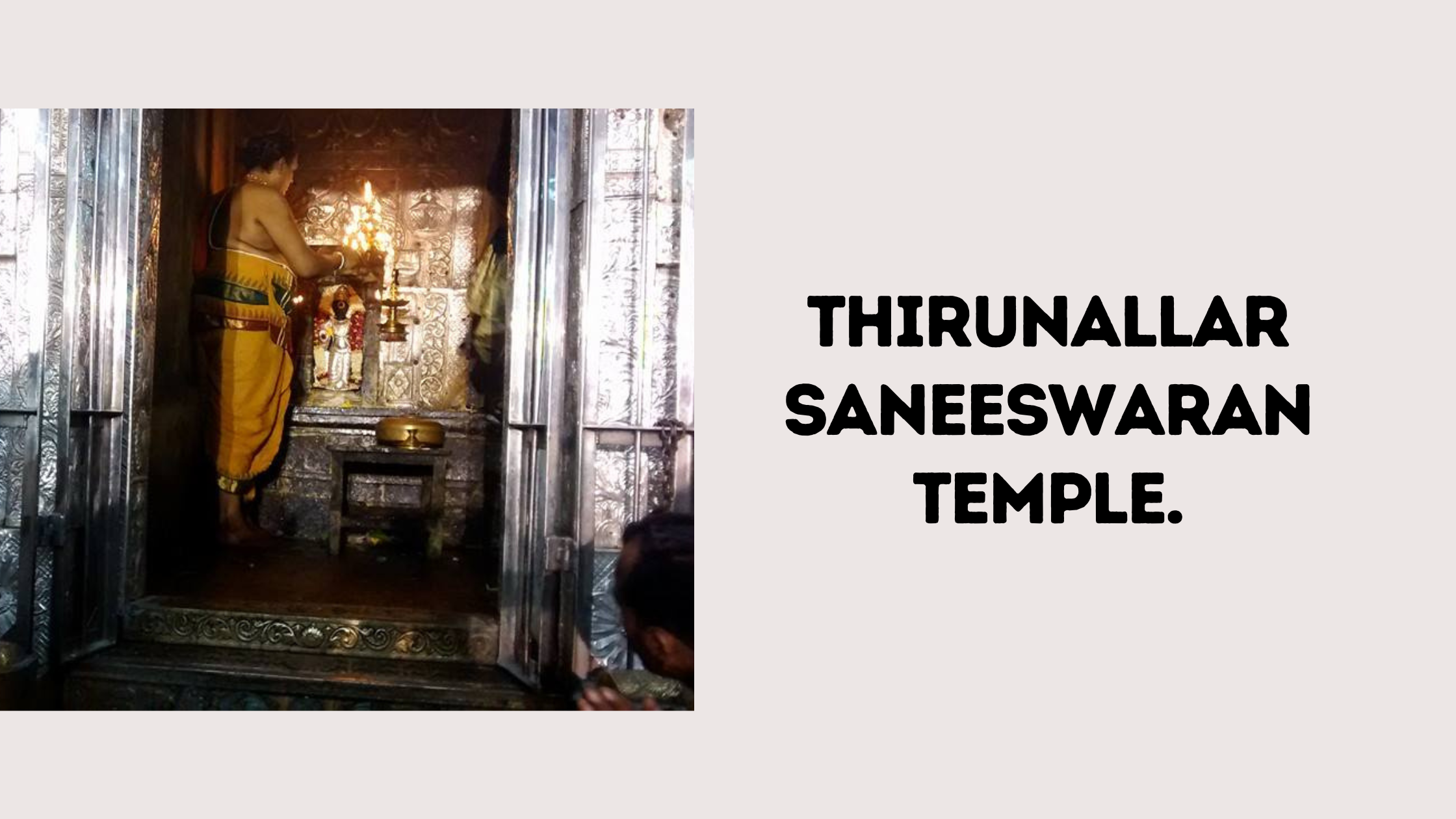Thirunallar Saneeswaran Temple: The Thirunallar Saneeswaran Temple stands as proof of the divine connection between Lord Shiva in the form of Darbharanyeswaran and Goddess Parvati as Pranamambika or Poonmulalammal. As a powerhouse among the Navagraha temples in the southern region, Thirunallar carries deep significance in removing the malefic effects of Shani (Saturn).
Also Read:
Thirunallar Saneeswaran Temple: An Overview
At the heart of the temple, Saneeswaran gracefully stands next to Lord Darbharanyeswaran, offering devotees a divine presence to seek relief. The Lingam within the temple, bearing impressions of grass, reflects the origin of the village as a once lush forest adorned with Dharba Grass. Dharbaranyeswarar, the name of Lord Shiva here, is derived from ‘Dharba’ and ‘Aranyam,’ representing the connection with the forest.
Other shrines within the temple pay homage to deities such as Lord Somaskanda, Swarna Vinayaka, Lord Subramaneswara Swamy, and Thyagaraja. The sacred theertams or tanks, including the Nala theertam, carry value for devotees seeking to cleanse themselves of misfortunes and ailments caused by past karmas. Lord Shani, known as the dispenser of both good and bad karmas, plays a major role in this spiritual haven.
Location and Religious Significance
Thirunallar is a tranquil town, nestled just 5 km from the Karaikal district of Puducherry, Tamil Nadu. This temple, covered by the Noolaru and Vanchiaru rivers to the north and the Arasalaru to the south, holds religious significance as a Paadal Petra Sthalam, revered in the Tevaram, a Tamil Saiva canonical work.
Dealing with Difficulties: The Spiritual Perspective
The Dharbharanyeswarar temple, also known as the Shaneeshwarar temple, has discovered its place in Hinduism, celebrated by notable Tamil Saivite poets like Sambandar, Appar, and Sundarar. Additionally, Arunagirinathar, a devoted follower of Lord Muruga, contributed hymns to this sacred space in the 15th century, adding a layer of Murugan worship to its spiritual tapestry.
People struggling with the challenges of bad luck in marriage, work, accomplishments, or acquisitions find comfort in the temple’s spiritual ambiance. Seeking the blessings of Lord Shani to nullify the impacts of bad luck becomes a ritual for those craving positive transformations in their lives.
Temple Timings and Rituals
The Thirunallar Saneeswaran Temple opens its doors from 6:00 am to 1:00 pm in the morning and from 4:00 pm to 9:00 pm in the evening. Six daily pujas are performed, each comprising abhishekam, alankaram, neivedyam, and deepa aradhani, starting from 6:00 am until the final puja at 9:00 pm.
Historical Narratives and Architectural Marvels
The temple’s history intertwines with the narrative of Saneeswaran, born to Saya Devi and Surya Dev. The temple architecture, dating back to the 12th century, showcases Chola controls with subsequent expansions by Vijayanagar rulers. A unique feature is the representation of Navagrahas as nine separate wells, each adding to the spiritual aura.
Journey to Thirunallar
For those seeking the divine ambiance of Thirunallar, the Trichy International Airport acts as the nearest air gateway, while Nagore Railway Station, a mere 10 km away, is the closest rail connection. Multiple Tamil Nadu Government buses connect Nagore and Thirunallar, presenting accessible transit options.
Festivals and Celebrations
The Sani Peyarchi festival, held every two and a half years when Saturn changes its position, is a highlight at the Saneeswaran Temple. Shivaratri and Brahmotsavam festivals, along with weekly rituals and monthly celebrations, add energy to the spiritual calendar of Thirunallar.
At The End
Thirunallar Saneeswaran Temple beckons seekers of solace and transformation, delivering a haven for those facing the challenges of life. By exploring the sacred nuances of this temple, one can tap into effective strategies for handling difficulties and encouraging collaboration. As devotees offer prayers to Lord Shani, seeking to bear the effects of their karmas, Thirunallar stands as a beacon of spiritual guidance and strength, weaving together history, architecture, and devotion in a tapestry of divine communication.

